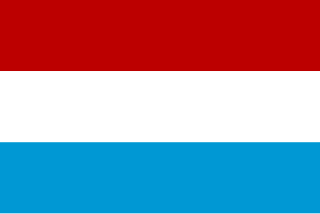
The Egmond or Egmont family is named after the Dutch town of Egmond, province of Noord Holland, and played an important role in the Netherlands during the Middle Ages.

Uys is the surname of a family that played a significant military and political role in South African history during the nineteenth century and made distinguished contributions to South African culture, politics and sports during the course of the twentieth.

Polsbroek is a village in the Dutch province of Utrecht. It is a part of the municipality of Lopik, and lies about 10 km southeast of Gouda. The village of Polsbroek consists of a ribbon of farms on both sides of the Benschopse Wetering, with a small centre on the west side of the village.
Moritz Hermann of Limburg,, count of Limburg Stirum, son of Moritz of Limburg Stirum, was the second reigning count of the branch Limburg-Styrum-Styrum.
Christian Otto von Limburg Stirum, count of Limburg Bronkhorst and Stirum (1694–1749), was a member of the House of Limburg-Stirum and the third reigning monarch from the branch of Limburg-Styrum-Styrum.
Dr. Daniel Hugo was a specialist announcer / producer for Radiosondergrense, the national Afrikaans radio, and was also responsible for the literary programmes "Leeskring" and "Vers en Klank". He is an editor at the publishing house Protea Boekhuis.
The Illustrious Brotherhood of Our Blessed Lady was a religious confraternity founded in 1318 in 's-Hertogenbosch to promote the veneration of the Mother of God. The brotherhood was organized around a carved wooden image of the Virgin Mary in St John’s Cathedral in 's-Hertogenbosch. The Brotherhood had two types of members: ordinary members and sworn members, also called 'swan-brethren' because they used to donate a swan for the yearly banquet. Sworn members were clerics in principle; in fact they were often chosen among the nobility, the magistrates, etc. As a result, the Brotherhood also functioned as an important social network.

The Van Amstel family was an influential dynasty in the medieval Netherlands from the twelfth until the fourteenth century. The family developed the Amstelland and held the stewardship in the ecclesiastical districts in the northwest of the Nedersticht of Utrecht, first in the name of the bishop of Utrecht and later the count of Holland.

Catharina Pietersdr. Hooft was a woman of the Dutch Golden Age. She became famous at a very early age, when she was painted by Frans Hals. At the age of sixteen she married Cornelis de Graeff, nineteen years her senior and the most powerful regent and mayor of Amsterdam. Thus she became first lady of Soestdijk, one of the family's country houses. Catharina Hooft was also a Lady of the High and free Fief of Purmerland and Ilpendam.
Rupert III "the Bellicose" of Nassau, German: Ruprecht III. "der Streitbare" von Nassau, was one of the earliest counts of Nassau. He took part in the Third Crusade.

Gerrit de Graeff (III.) van Zuid-Polsbroek was a member of an influential regent family of Amsterdam, who have played an important role in the Dutch Golden Age.

Egmond Castle, also called the Ruins of Egmond, is a ruined medieval castle in the Dutch province of North Holland. It is located in Egmond aan den Hoef in the municipality of Bergen, and lies about 7 kilometres (4.3 mi) west of Alkmaar. The castle dates from the 11th century and is the ancestral seat of the Egmond family, whose members became sovereign Dukes of Guelders, Counts of Egmond and Princes of Gavere, Counts of Buren and Leerdam. It is a national monument of the Netherlands.
The Free and high Fief of Zuid-Polsbroek was a semi-sovereign or 'free and high' fief, now part of Polsbroek in the Dutch province of Utrecht.

Jacob de Graeff, was a member of the De Graeff-family from the Dutch Golden Age. He was an Amsterdam Regent and held the titles as 20.th Lord of the Free and high Fief Ilpendam and Purmerland. Jacob de Graeff was a member of a family of regents who belonged to the republican political movement also referred to as the ‘state oriented’, as opposed to the Royalists.
Katharina of Hanau-Lichtenberg was a daughter of Count Philipp V and his wife, Countess Ludowika Margaretha of Zweibrücken-Bitsch (1540–1569).
Joan Paul Schaghen was an acting Governor of Ceylon in 1725 and 1726 and director-general of the council of the Dutch East India Company in Batavia from 1737 to 1741.
The County of Diepholz, that was first known as the Lordship of Diepholz, was a territory in the Holy Roman Empire in the Lower-Rhenish-Westphalian Circle. It was ruled by the Noble Lords, later Counts, of Diepholz from the late tenth century until 1585, when it was mostly incorporated into the Duchy of Brunswick-Lüneburg.
Henry I of Nassau, German: Heinrich I. von Nassau, was the first person who named himself count of Nassau.
Herman of Nassau, German: Hermann von Nassau, was count of Nassau. He later became a clergyman.












